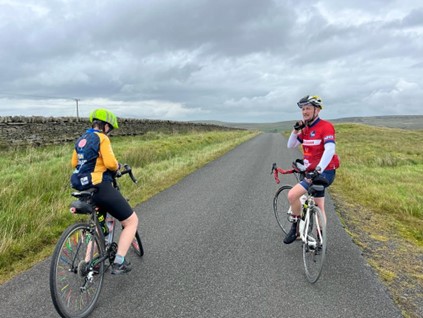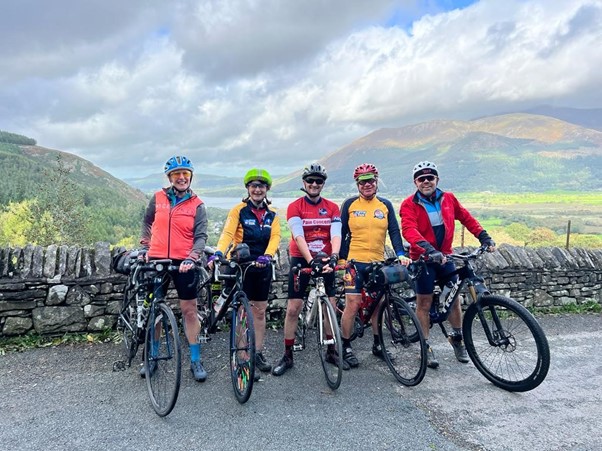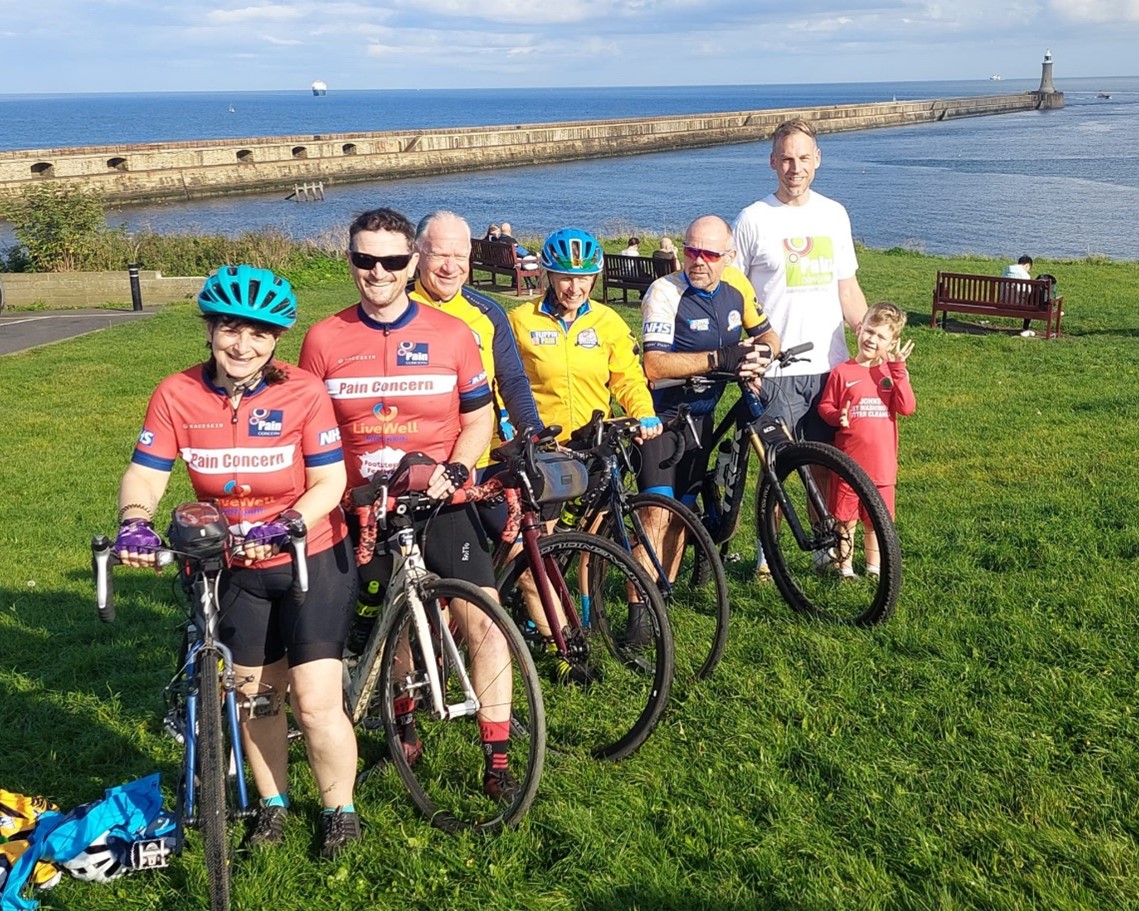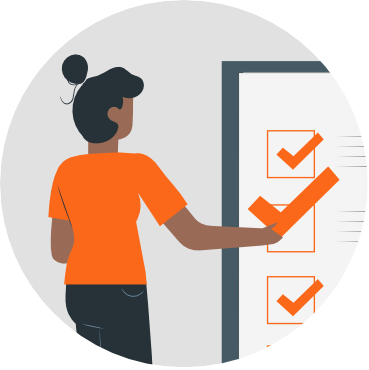Peddling for Pain
18th November 2023 | Niki Jones and Lee Vaughan
At the end of September Lee Vaughan and Niki Jones cycled the classic English Coast to Coast (C2C) route. This ride – 144 miles over three days – is a challenge for most people, but for Lee and Niki, it was also undertaken while living with persistent pain.

The challenge helped them raise money for Pain Concern, a charity that works to improve the lives of people living with pain and those who care for them, but they also wanted to raise awareness of the challenge of living with persistent pain and the helpful resources available such as Live Well With Pain.
This blog is in three parts – to mirror the three days it took to undertake:
-
The Why
-
Doing it
-
The Aftermath
This post is part 1: The Why . . .
Why do a Hard Thing?
Why would you choose to do something that is a huge physical, mental, and emotional challenge? What would drive you, especially when life can be challenging enough in and of itself? For Lee and Niki, it came in two parts – personal and wider considerations.
Personal – goals and empowerment
There’s something about a value-driven goal to get you to nudge the edges of your comfort zone – and when that is done with friends it’s easier to make larger nudges. Both had had wonderful experiences on the Flippin’ Pain Outreach Tours (more cycling adventures) and re-capturing some of those feelings was a big incentive. The sense of achievement and fulfillment is another aspect that helped to influence the motivation for both to take on and train for such a challenge.
When you live with persistent pain, even when well-managed, or even if you consider yourself largely recovered as Niki does, you still have to live life with care. You also never forget the deep, dark, hurt times; when pain made you isolated, lonely, and increasingly doubtful of yourself. You don’t choose persistent pain – it bellows down upon you and the only choice you have is in how you survive.
There is empowerment in the active choice of doing a ‘Hard Thing’ – a sense of control often lacking with persistent pain, at least in the early days. The active choice of doing this challenge along with the right support, fed that sense of empowerment for both Lee and Niki. Chosen Hard Things can build confidence and resilience, and both are key to thriving.
Wider – awareness and hope
Was there a wider value in doing this challenge? We know that in some estimates up to 50% of the UK population suffers from persistent pain. Raising awareness that not only so many suffer, but that there are such good resources available to support people was a fundamental motivator to Lee and Niki, both of whom are known pain advocates. Raising money was also important, funding the valuable work Pain Concern does.
But of equal importance is showing, by doing, that challenges can be taken on and overcome despite persistent pain. Those nudges of Hard Things, whatever form they take, help us grow and start to really embody living well with pain. The type of Hard Thing will vary from person to person, and the courage we use every day living with persistent pain is perfect when used in this direction as well.
Effective Self-Management
Lee and Niki also wanted to bring glimmers of hope to people – that Hard Things are possible when effective self-management becomes an intrinsic part of life as it has for them. Self-management is a continuous process – it adapts and grows as life adapts and grows. Taking on a challenge like this involved a lot of hard work and commitment beforehand, courage and tenacity during, and care and reflection afterwards. While it doesn’t entirely mirror mundane everyday living, we all encounter tests both large and small in life, and feeling better equipped to deal with them helps us thrive.

Training Body and Mind
The training process for a big challenge like this is key – and it has more aspects than the physical fitness, mental and emotional training is also needed.
Physically – Lee has a solid background in sports fitness and was highly capable of looking after himself in this way. Niki knows how to get a horse fit and treats herself accordingly! With a graded approach to fittening, including rest days, they both felt confident that although it would be hard physically, they had done what they could in the time available to be decently fit. This process is chronicled in their training Vlogs here. Access the playlist here
Cycling – like many things – is surprisingly more of a head-game than a body-game. Recent studies have shown that one’s perception of the severity of a gradient of a hill is affected by both pain and expectations of effort. This means people living with pain might overestimate the gradient of a hill compared to those who do not live with pain, and that if you expect the effort to be significant then this can affect your perceptions of physical symptoms! Our brain and our mind are involved here. Add in the emotional component as well and you can see how important working with your thoughts and feelings are while you are cycling and how that can mirror everyday life.

Daunting
In the run-up to the C2C challenge, both Niki and Lee experienced levels of anxiety and fear – of the physical and emotional challenge, of the unknown, of the reduction in level of support on this trip, and of the pressure of committing to doing something that felt this important.
The support they gave one another was vital and by being vulnerable, honest, and communicating clearly what they needed they allowed this to be at its most effective. This in itself takes courage and trust. They also highly valued the wonderful cheerleading and encouragement from a wide range of friends and supporters. It’s easier to undertake such trials buoyed on a wave of such support.
In other practical ways, they prepared as thoroughly as they could, ensuring their bikes were in the best condition and that they had everything they needed in terms of clothing, equipment, and information (including Taxi companies for rescue should it be needed).
They prepared so they could reduce the worry as much as possible to allow the excitement and anticipation to exist.
There are many parallels to living with persistent pain in preparing for, doing, and unwinding from such a challenge – in any challenge that causes us to nudge at those boundaries!

 What is self management?
What is self management? Using our resources
Using our resources About us
About us Always trusted, always free
Always trusted, always free Explore our resources
Explore our resources Ten Footsteps programme
Ten Footsteps programme Professional tools
Professional tools Training for practitioners
Training for practitioners Our newsletter
Our newsletter Inspire – our blog
Inspire – our blog